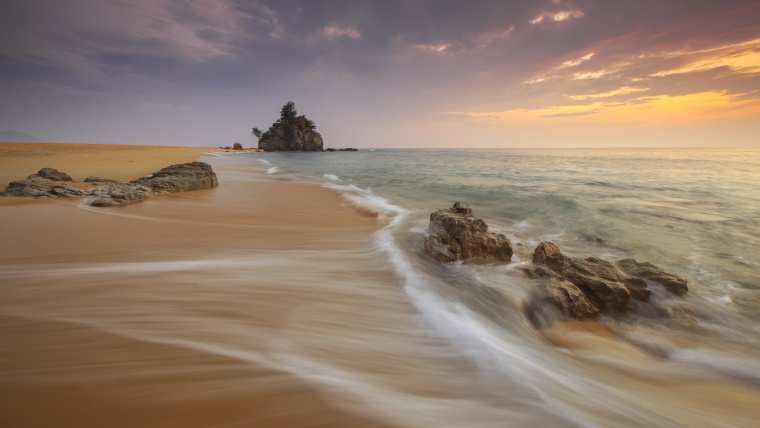
Imagine you’re standing at Glacier Point, shooting the beautiful morning sun as it rises behind Half Dome. Sipping on hot chocolate, you adjust your settings accordingly to the flooding light. The air is wet and there’s a faint vanilla scent from the surrounding Jeffrey Pines. You screw in your Graduated Neutral Density filter and take a couple shots. The sun is rising slow and you are in no rush, savoring each moment you have, just you and the camera this morning. Nothing else matters.
Compare this to someone who ran up, took a shot, and then ran back to their computer for post-processing. They don’t care about crafting the perfect image in the camera, they know they can fix it in post. No hot chocolate for them, no smell of the Jeffrey Pines. No memories other than the photograph.
Where would you rather spend your time? Perfecting the image in camera on location, or spending the majority of your time behind a computer trying to fix the image in post? This answer should not be difficult. What draws photographers to landscape photography is the promise of long afternoons hiking up to the perfect spot and setting up the camera, the sole focus for the next few hours is to get the shot, nothing more.
To ensure you can maintain this lifestyle, you will need a couple accessories in your camera bag. While you can find lists of up to 30 must have accessories, you really just need a few essentials to get started, the rest is up to your creative vision. You cannot buy that, nor can you buy experience. So get out there!
Table of Contents
A polarizing filter is great for stopping down the entire image. It will reduce glare from reflective surfaces, like water or even from leaves, by stopping down up to 3 stops, depending on which filter you purchase. A polarizing filter will also help to increase saturation in an image. While you may think these are easily replicable in post-processing, there are certain aspects of reducing glare that will be difficult to adjust in Lightroom, requiring more advanced knowledge of the program.
While you may be able to get away with not carrying a polarizing filter in your bag, a neutral density filter is a must. These filters are offered anywhere from 3-10 stops on average. What’s great about a neutral density filter is it’s ability to block out light, which will allow you to adjust one or more of you camera settings to more of an extreme. You can see this in an image of a waterfall or river, where the water is blurred, the result of a long exposure. The neutral density filter allowed for the slow shutter speed, while still maintaining proper exposure in the image. This is something you could not achieve in post-processing.
A graduated neutral density filter works in much the same way as a neutral density filter, but as the name suggests, the filter intensity fades from one end to the other. The purpose of this is for scenes where the sky is too bright when exposed for the landscape. We’ve all seen images like this, where the sky is blown out. Just having a graduated neutral density filter can make the difference between an ok and mind-blowing landscape photograph. While this can be applied in post processing as well, getting it right in camera will ensure the most natural looking image, while allowing for more time in the field and less at your computer. Where would you rather process your image? In front of a beautiful landscape or inside on your computer. Again, not a hard choice to make.
An essential accessory for landscape photography, a tripod will allow for those beautiful long exposure shots of star trails and blurred waterfalls. Even if you are shooting a classic landscape image, a tripod is essential to have, in case exposure requires a slow shutter speed. This will happen often, when you want the entire sweeping landscape in focus. The wide aperture requires a slower shutter speed, and increasing ISO introduces more noise into the image. When shooting blurred water to create a dreamy landscape, you’ll need to pair your neutral density filter with a tripod, otherwise there’s no way to achieve this look. When deciding which tripod to get, first confirm what you need. Does it need to be lightweight? Will it get wet? Does it need to hold up heavy lenses? Once you know what you are looking for, then you can narrow down your options and decide which to buy based on price point. There are options at every price point now.
Pairing well with a tripod, a remote shutter release will ensure there is no camera shake when taking long exposures. Even with a camera on a tripod, the act of pressing the shutter can cause unwanted blur. Remove shutter releases are inexpensive and small, not taking up much space in your bag. It really adds no extra bulk to carry one along with you, you’ll be happy to have it. It could even force you to become more creative with your shooting, trying multiple long exposure options where you normally would shoot handheld. It could add a new dimension to your photography.
While there are more accessories you can carry in your landscape photography, these are the essentials. Don’t get bogged down thinking you need a ton of gear just to get a good image. You can take beautiful photographs without even using the above. The most important is to get out there with what you have and start shooting. Buying more accessories will not make you a better photographer if you don’t know your camera. As your skills grow, so too can your equipment, but for now, keep it simple and enjoy the journey.
Comments (0)
There are no comments yet.